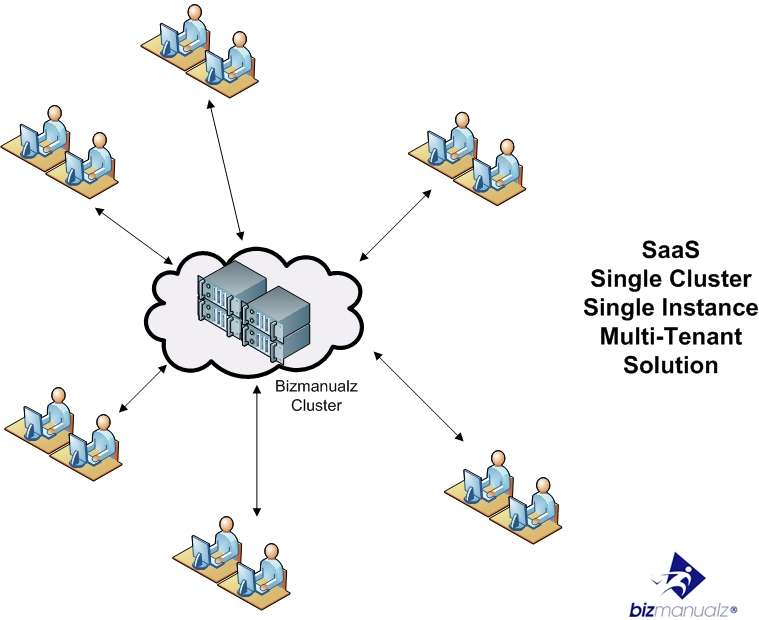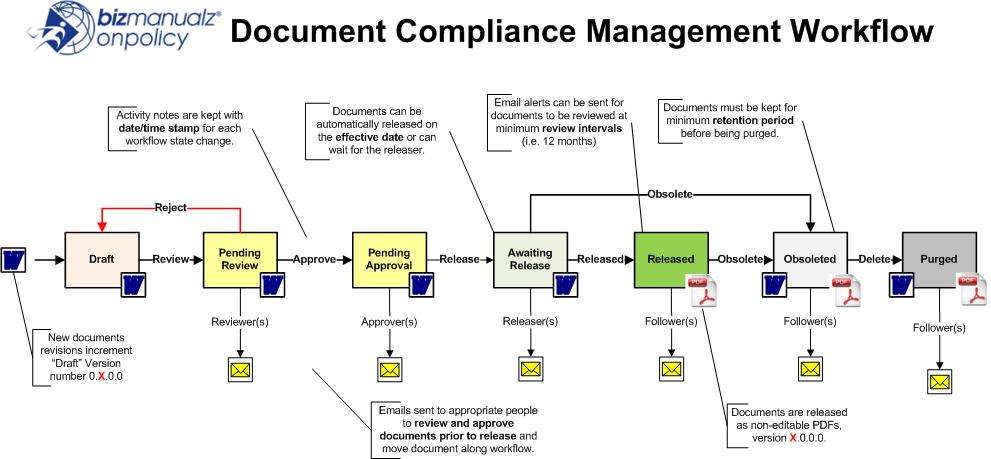How to Develop Intranet Policies and Procedures for Multiple Departments

Companies are using a wide variety of software solutions to develop intranet policies and procedures for multiple departments. Common intranet policies and procedures software solutions include editing in MS-Word, publishing in PDF (Portable Document Format), and managing files in SharePoint. This article is about how to develop intranet policies and procedures for multiple departments.
 Intranet Policies and Procedures for Multiple Departments
Intranet Policies and Procedures for Multiple Departments
You can try putting most of your information on a wiki, but a wiki can be an inefficient solution for keeping documentation up-to-date and under document control. Adobe has a product called RoboHelp that’s good for maintaining a single source and distributing various versions and revision changes to a mixture of channels.
An alternative software for intranet policies and procedures is Flare, produced by MadCap. Flare supports DITA and XML, independent of whether you use Word or FrameMaker, to maintain your printable documentation. Some companies are using DITA-based technology to distribute documentation revisions to multiple channels (including marketing collateral).
Adobe RoboHelp with FrameMaker in structured mode supports DITA and XML. So what are DITA and XML when it comes to intranet policies and procedures?
Darwin Information Typing Architecture
Darwin Information Typing Architecture (DITA) is an eXtensible Markup Language (XML) technical documentation authoring and publishing architecture for creating topic-oriented content that can be reused and single-sourced in a variety of ways. In other words, you can tag <xmp> your text with special codes </xmp> the xmp tag set identifies the text as part of an example. I’m not sure how popular this is today, but it is very portable. The Internet exploded through the use of HTML (HyperText Markup Language), which is still the predominant markup language for web pages.
Access or SharePoint Databases
Why not just put all your policy and procedure documents into an Access database? If you have the technical skills, you could build your own document management database solution for intranet policies and procedures. SharePoint is an MS-SQL database solution that requires MS-Server administration and SharePoint designer capability. If you’re using SharePoint, you can add Nintex to provide advanced workflow capabilities.
SharePoint is not perfect, though. Version control is weak in SharePoint. Documents can be edited without a new version being created by simply opening/editing/saving. When dealing with intranet policies and procedures, it can be difficult getting users to check out documents correctly. Since checking in/out is optional, you need to continually remind your users that they have to check out and check in documents for version control to work.
Authoring and Publishing Workflow
Most companies use an Authoring site with restricted access, where all MS-Word versions are maintained, and a Published site, containing the approved PDF documents that your staff can see. Your policies and procedures workflow will allow you to easily add approvers and submit documents for review and approval.
 Review and Approval Workflow
Review and Approval Workflow
Reviewers/approvers are generally notified automatically (by email, for example) that a document is “awaiting review”. If the notification contains a link to the document, the reviewer can click on that link to retrieve the document for edit and review. With intranet policies and procedures, you can also designate the final approver, the person responsible for publishing (releasing) the document for general use.
All previous versions of the document should be maintained on the Authoring site for review and/or restoration. A document review log shows all approver comments, revision comments, workflow change dates, and any administrative histories for a document. Reviewers’ comments on version changes should only be visible to people with access to the Authoring site. The end users only need to see the approved PDF version on the Published site.
Search Capability
A robust search capability is critical — many people prefer e-documents because of search capabilities built into them, like Google search. You’ll also want some form of browsing navigation, perhaps alphabetical or categorical, to give your users options. The same user may come to your policy and procedure software portal two different times with two different goals.
Keeping people coming back to your intranet policies and procedures portal will be a challenge. Try adding a workgroup collaboration section to increase traffic.
Establish a policy that encourages everyone to link to the PDFs on your portal rather than keeping separate electronic or paper copies. If you bring people to your intranet portal for policies and procedures, you minimize the likelihood of incorrect or outdated policies floating around your office on computers and desks.
Acrobat Professional with Multiple Contributors
PDFs are great for reviewing and sharing documents, like intranet policies and procedures. Acrobat doesn’t change the original text, so there’s no problem with multiple contributors editing the same text, overwriting one another’s changes. Acrobat accumulates all reviewer comments as “sticky notes”, using identifying numbers inserted into the text.
You can consolidate all comments by simply answering a prompt for each one making it very easy to review and manually make the changes in Word. It can be more time consuming for the editor, but it is an easy way to manage comments from multiple contributors.
Now when you print a consolidated version of the PDF, all the comments are annotated on separate, inserted pages for each page of content, with “mapped” numbers tied to the text location making multiple comments on the same text easy to understand. You can easily share your final copy (with change summaries) with all contributors.
And of course, this review technique works for all document types, not just Word. Use it on Visio process maps and your reviewers won’t even need the Visio software. PDFs created using Acrobat Professional preserve embedded hyperlinks. But, if you use Acrobat Distiller, your PDF documents will not have active hyperlinks.
Develop Intranet Policies and Procedures for Multiple Departments
What alternatives are there to software solutions for developing intranet policies and procedures for multiple departments? Next, we’ll talk about Software as a Service or SaaS policies and procedures applications; they can reduce your reliance on your IT department and allow you to “pay as you go” only for what you actually use.















Leave a Reply